×
Save 20% On Your Purchase!
Use code SAVE20 at checkout to save on your purchase today from my Herbal Shop!
×
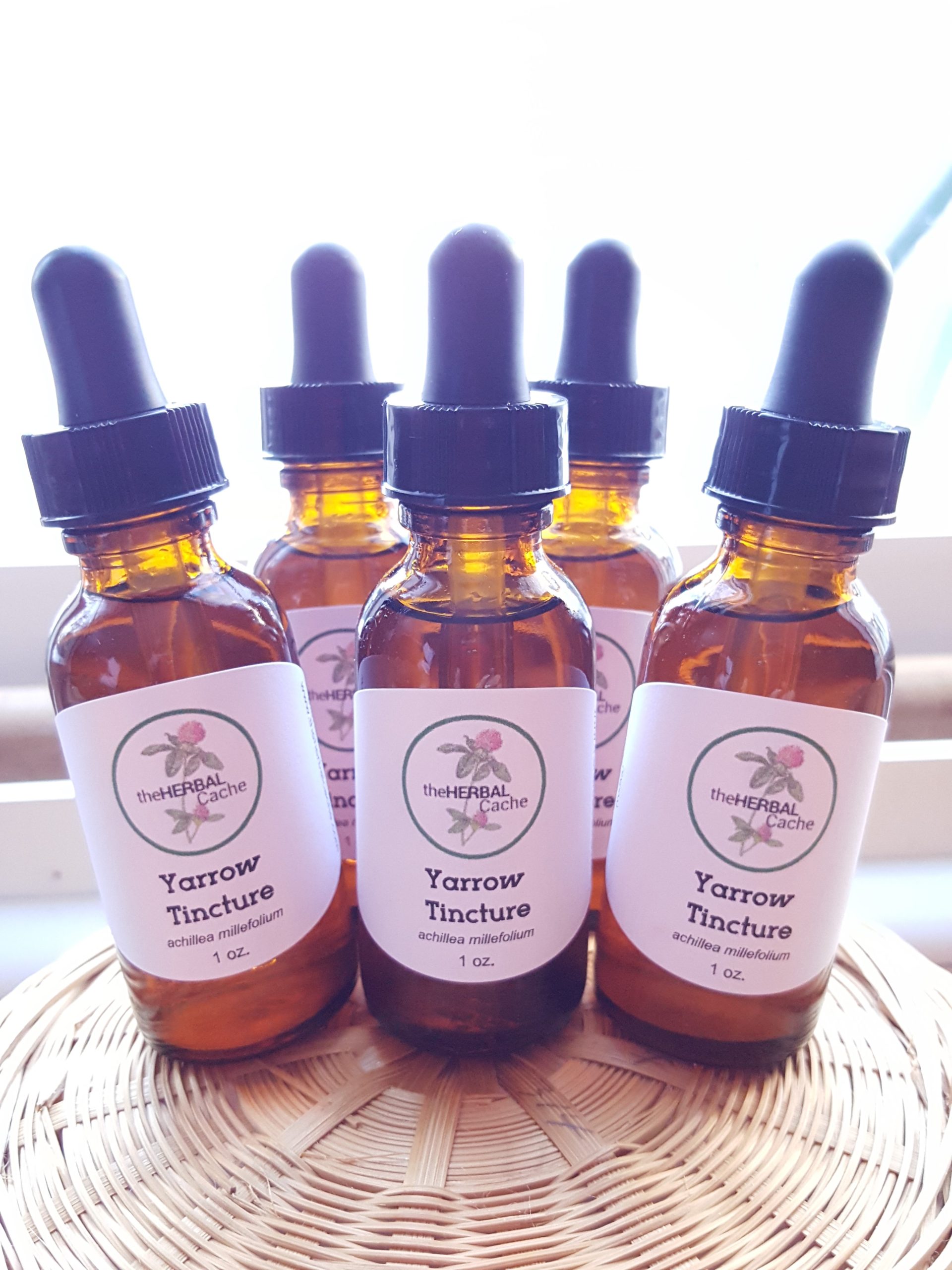
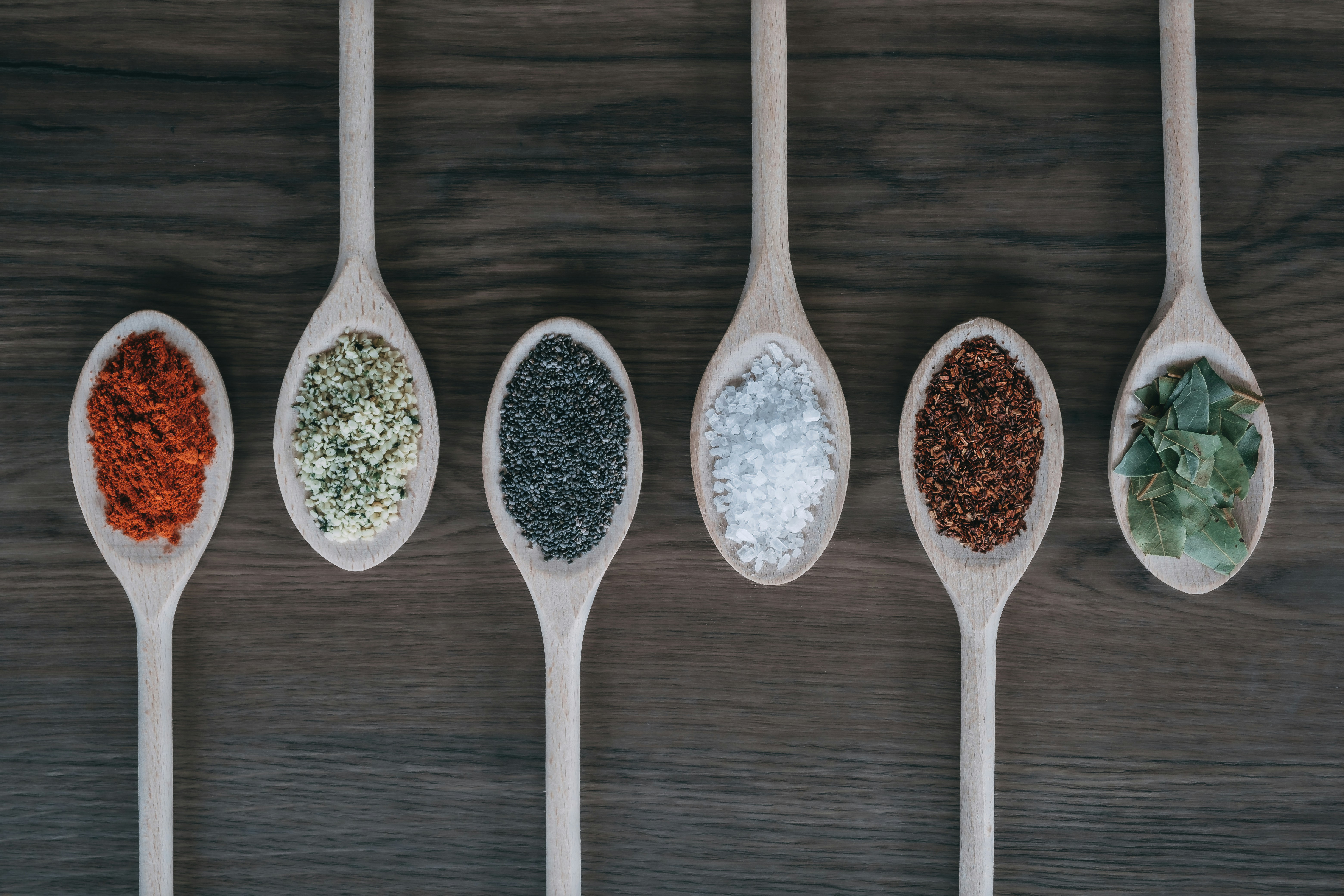
Welcome to another blog post in my series “Myths in Herbal Medicine”. Here I try to shed some light and knowledge surrounding a number of myths or views toward herbalism that are skewed one way or the other.
In this post I go over whether or not to use herbs by themselves or grouped in formulas and how formulas are created. A reminder that I am also talking about weeds when I refer to herbs, as they make up a huge part of my herbal apothacary.
Using a single herb for a symptom or purpose is fine. There is nothing wrong with that. Herbs, and weeds, are sometimes classified as simple little plants, but they can be complex in nature. Taking one herb by itself can help you learn how it affects you.
A single herb can affect you in one way or a number of ways. It depends on how you and the herb connect with each other. Because a herb may work one way for you, but slightly different for someone else.
When taking an herb for the first time, sometimes it is best to take it by itself. Pay attention to how you feel or if there are any changes in your body. This a a great way to learn how the herb is affecting you.
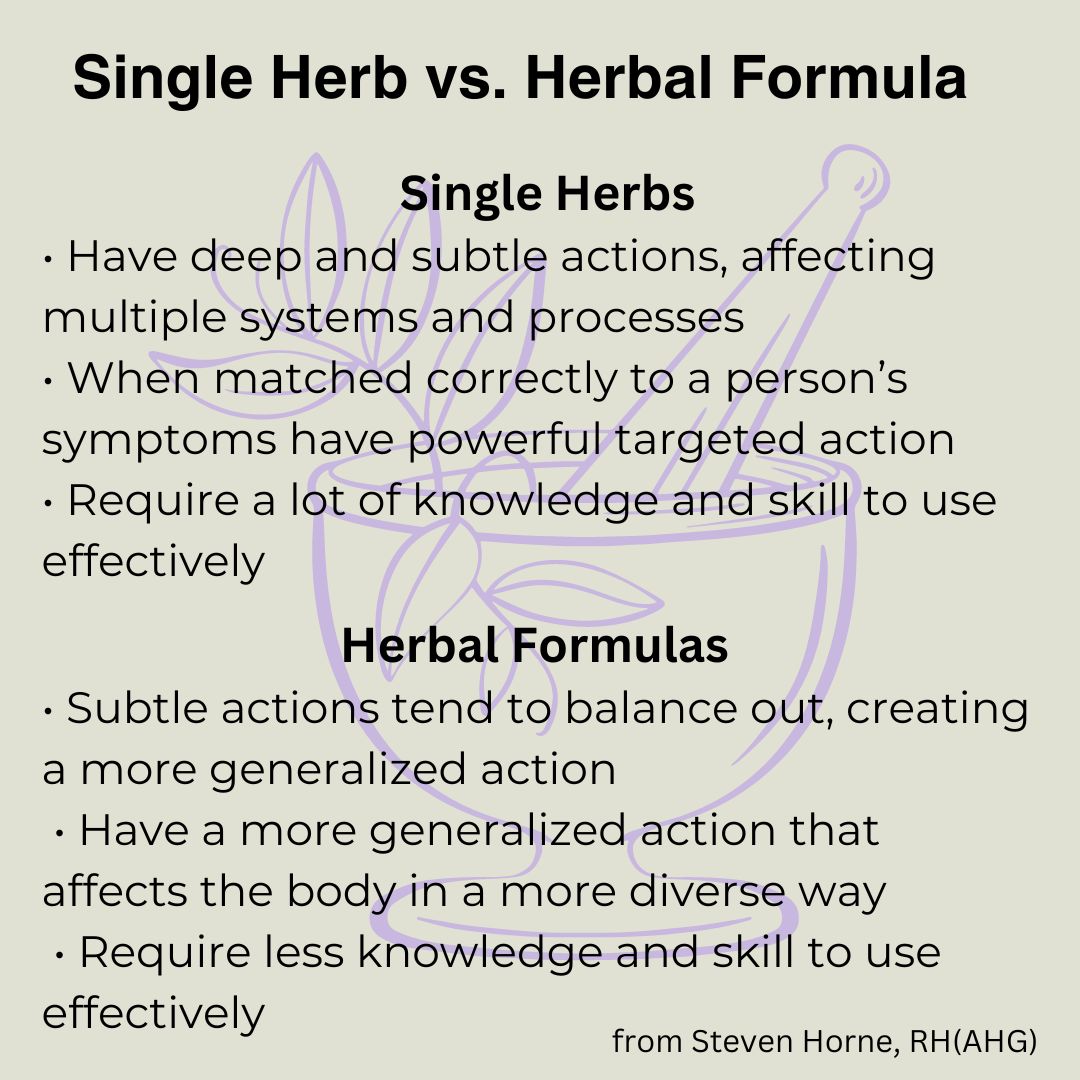
Many herbs, when combined with other herbs, work better then when on their own. There is a synergy that is created.
Synergy = “the whole is greater than the sum of its parts”
You can compare it to a car. A tire on its own rolls, but when it is combined with all the other parts of a car, it can roll very fast! And if you remove certain parts, the car will no longer work the way it was intended.
European, TCM and Ayurveda generally believe through practice and experience that synergy between herbs is happening and is a central part of their doctrine. This synergy is the harmony created by the individual as part of something, like the tire and car I just referred to.
Many herbalists believe that putting herbs into formulas makes them much stronger then using them on their own because of the synergy that is taking place. It’s like creating a team. A recent double-blind, crossover trial using 20 young, healthy volunteers, taking a formula containing ginseng, Panax ginseng, and ginkgo, ginkgo biloba, demonstrated to be more effective in improving cognitive function than either alone (Scholey and Kennedy 2001).

Herbs have been used in formulas for thousands of years. Many of those formulas are still used today, some maybe slightly changed.
One of the best-preserved manuscripts, called Wushier Bing Fang, written on silk, described prescriptions for treating 52 illnesses. It is believed it was compiled around 900 BC, nearly three thousand years ago! It was found in a Chinese Emperor’s tomb. It contains over 170 formulas using two or more ingredients.
Combining herbs can almost be called an art. The fun, or interesting, part is that every formula is unique. A formula is created for one individual based on their health history, diet, exercise, current symptoms, etc. There is no “right” way because every herbalist adds their personal flair when they create their formulas.
There are a number of things that do need to be taken into consideration when creating formulas:
There is no magic number for the amount of herbs you should use when formulating herbal medicine. What matters most is not how many herbs you used in your formula but your reasons for selecting them and your approach to combining them.
Herbs can be formulated together in a number of ways. The art is knowing, and learning, which herbs to combine to get the affect you are after and what delivery method to use.
You need to ask a couple of questions. Is this the most convenient, most delicious, most effective way to deliver your remedy? Would the formula be better as an infused honey, a steam, or a capsule? Is the person taking it going to want to take it? Also consider solubility: choose herbs that will extract in the method you’ve chosen, or choose the method based on the herbs.
Here are a few ways for delivery:
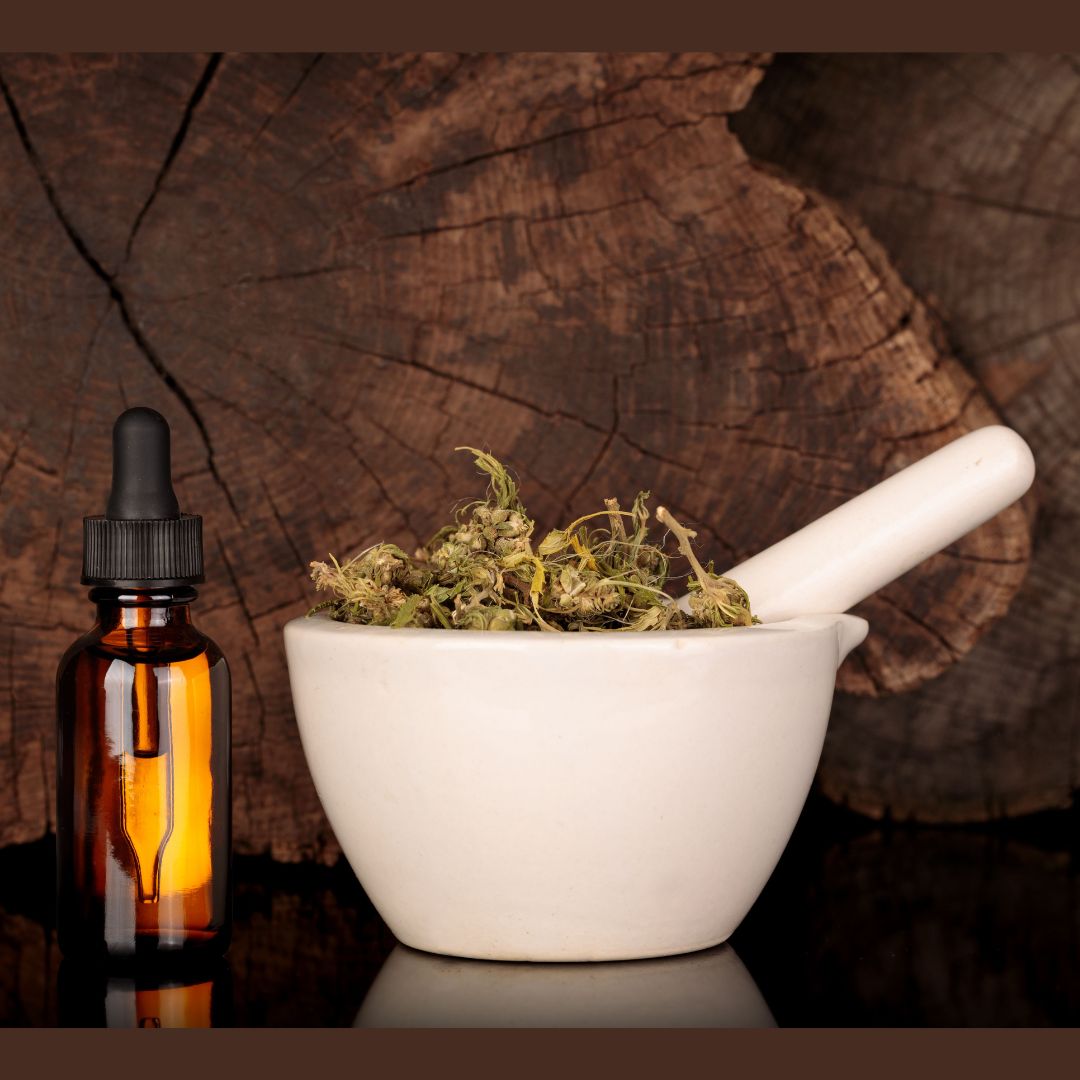
As we all know, we use many herbs for cooking. And in many cases, we are using multiple herbs together, because they work well together.
Some traditional combinations are:
Herbal medicine is generally more forgiving than you may think, so don’t be afraid to try. Trust your knowledge, gut feeling and just create!
The only way you learn how the herbs work together is if you try. Like I mentioned earlier, every formula is different because every herbalist adds their own flair and knowledge to it.
And like everything else, creating formulas to use over single herbs, is a learning process. One formula may not do what you wanted it to do, but that doesn’t mean give up. Keep trying.
Creating a formula is a lot like arranging a flower bouquet or writing a poem, finding that perfect balance and beauty that works for you.

Read my other blog posts in this series of “Myths in Herbal Medicine” and let me know what you think.
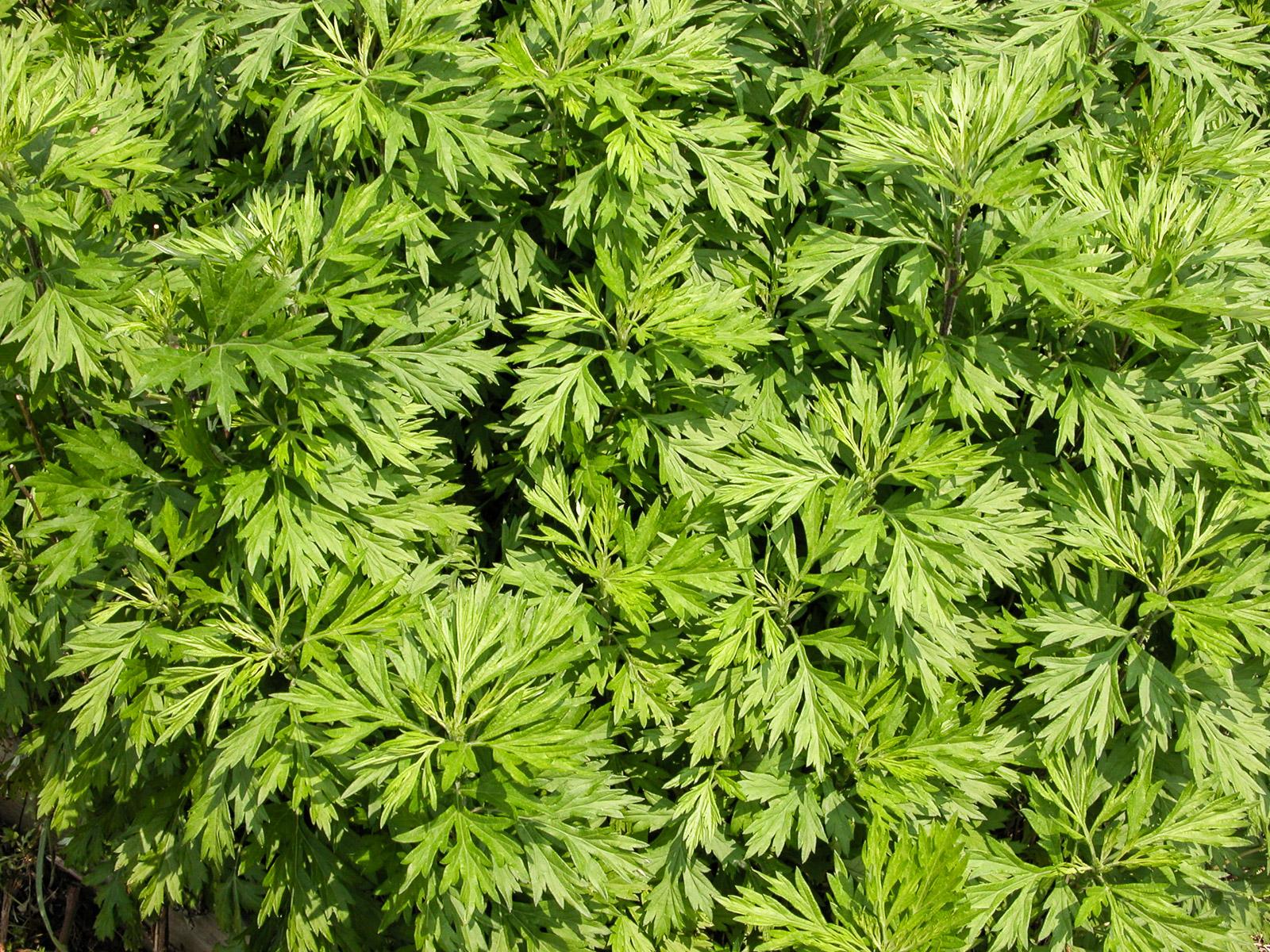
Mugwort, Artemesia vulgarisis, most commonly known as the plant for dreams. As the name suggests, this herb effects the subconscious and promotes vivid dreams. It is named after Artemis, the Greek goddess of the moon and hunt and has a rich history in many herbal traditions as an herb used in spiritual and ritual functions.
Mugwort has seen many uses throughout the years. It is believed that St. John the Baptist put it in his clothing when he was out in the wilderness for protection, hence its nickname, St. John’s Plant. To help increase stamina, Roman solders placed it in their sandals before going off to battle. The Anglo-Saxon tribes believed that mugwort was one of the Nine Herb Charms gifted to the world by the god Woden.
Some Native American tribes used mugwort as a tool to ward off evil spirits. The 16th century herbalist and astrologer, Nicholas Culpeper, associated it with the planet Venus and therefore is considered a nourishing herb for women’s health and vitality.
Mugwort has been notated as far back as 3 B.C., where it can be found in Chinese poetry and ballads.
And for those beer lovers, mugwort was used before hops became the standard in recipes.
Like the title of this blog post says, mugwort has so much more to offer then just dreams.
Mugwort contains several analgesic compounds, including monoterpenes, that help with pain when used topically. Traditional Chinese Medicine has a long history of using this herb for pain relief.
Because mugwort is considered a diuretic, it stimulates urination, one of the best way for your body to eminate toxins. In conjunction, it may also benefit the kidneys and bladder, improving their function and reducing the likelihood of infection.
With its high concentration of vitamin C and other antioxidants, mugwort is wonderful for helping support your immune system. Because vitamin C acts as a powerful antioxidant, it also helps neutralize the free radicals that cause inflammation and weaken the body’s immune system.
Several of its active compounds also stimulate the production of bile, which can speed digestion. Mugwort also helps to ease indigestion, stimulates appetite, reduces bloating and cramps. It may also combat uncomfortable conditions like constipation and diarrhea.
Be careful, as it is also a natural laxative. So don’t overdo it.
Mugwort can help in the treatment of dysmenorrhea, or menstrual cramps. It can also stimulate and regulate menstruation and support the body during the menopausal transition. Please note, pregnant women should not take it because it could lead to miscarriage and premature labor.
With its high concentration of potassium, iron, and calcium, mugwort is excellent for helping to maintain healthy bones and preventing osteoporosis, along with other age-related bone issues.
The beta carotene-derived vitamin A, found in mugwort, might protect against macular degeneration and slow cataract development.
A 2017 review concluded that aqueous and alcoholic (i.e., tea and tincture) extracts of mugwort and other species within the Artemisia genus can effectively decrease blood glucose levels with relatively lesser side effects than standard antidiabetic medications.
Mugwort, like its sister plant wormwood, it can help get parasites and intestinal worms out of your body. It also works against candida, including Staphylococcus aureus, Bacillus typhi, B. dysenteriae, streptococci, E. coli, B. subtilis, and pseudomonads (a 2020 review featured in PubMed by Halina Ekiert confirms this).
The nervine properties of mugwort may make it very helpful for treating anxiety, depression, and chronic stress. Herbalist David Hoffman writes, “[Mugwort] has a mild nervine action, which also appears to be related to volatile oil content, that may help ease depression and tension.” Need to relax? Make a cup of mugwort tea.
It has long been used for treating malaria since the outbreak in 1970, including the high-drug resistant strains. Mugwort contains artemisinin, an active chemical compound extracted from artemisia plants that makes it a perfect treatment for malaria.
Burning certain dried herbs helps to kill bad bacteria lingering around.
Mugwort has antimicrobial properties, so if you just want to purge your house of nasty bacteria, consider using a mugwort smudge or incense.
Mugwort has long been praised for its “psychic” and even “hallucinogenic” properties. But in reality, its hallucinogenic properties are nowhere near as intense as herbs like wormwood (which mugwort is related to) or vervain, and those who have experienced a narcotic high won’t find the experience similar at all.
Some users have claimed that it helps them remember their dreams more vividly and even have the occasional lucid dream.
Mugwort is a perennial that self-seeds and will grow just about anywhere, in fields and along roadways. It is considered an invasive weed in many places because it is fast-spreading .
It is a tall, upright plant, reaching six feet, with beautiful feathery leaves. The tops of the leaves vibrant green and the undersides have a silver iridescent hue.
It is in the Asteraceae family, so if you are allergic to daisies, you may want to be careful in how you interact with mugwort.
During the summer, mugwort displays small red, pink, orange, and yellow flowers. It’s known for being attractive to pollinators like bees and butterflies.
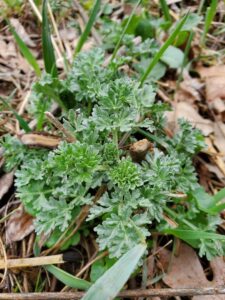
There are many ways to use and take mugwort. The entire plant can be used, the roots, leaves and flowers. Listed below are some to get you started on your mugwort journey.
The flowers and leaves can be used in a variety of food dishes. It pairs well with rich, heavy foods, helping to digest them more easily.
This herb can be used like any other green. It can go raw into salads. It does have a bitter taste, so start with just a small amount mixed with other greens.
Mugwort also goes well in soups and stews, like cilantro or parsley. Don’t stop there, you can add it to rice, chicken and fish to add flavor.
Being it is a green, throw some into your next green smoothie, if that’s your thing.
Because mugwort helps with gas, stomach acid, bile production, and overall digestion, tea is an easy way to handle these issues.
Taking it as a tea before going to bed helps to soothe the nerves. It could also give you some interesting dreams!
Fun fact: Back in WWII, when tea became a pricey luxury, mugwort was used as a tea substitute in some parts of England.
Tinctures are a simple and easy way to get mugwort into your system. You can either make your own or purchase it from an herbalist or natural wellness store.
This is a traditional Chinese medicine technique that involves the burning of mugwort to promote healing with acupuncture.
Mugwort leaves are dried and then lit over acupuncture points to circulate and strengthen blood and move energetic qi stagnation in the body. This facilitates energetic movement where there is limitation, restriction and stagnancy in the mind, body, and spirit.
Using a mugwort smudge stick can help to purify and clean the air. It can get rid of bacteria and other pathogens that may be in the air.
If you have problems with aphids or other insects in your garden, you may want to consider having a plant or two of mugwort. Remember, mugwort can be a bit greedy when it comes to space, so growing it in a pot will help it from taking over your garden.
A 2013 study affirmed this traditional knowledge of mugwort’s insecticidal properties, finding that even low concentrations of mugwort essential oil repelled and killed mosquito larvae.
You can make a weak mugwort tea and put it in a spray bottle for a bug spray.
You can purchase my Mugwort Tincture from my Herbal Shop today.
I wildcraft the plant myself in Central MN and make the tinctures in small batches.
I use the folk method for making all my tinctures, which uses no measurements except sizing things up with your eyes. So I put the plant material in a jar and then fill with alcohol.
The tincture comes in a 1 oz bottle with dropper.
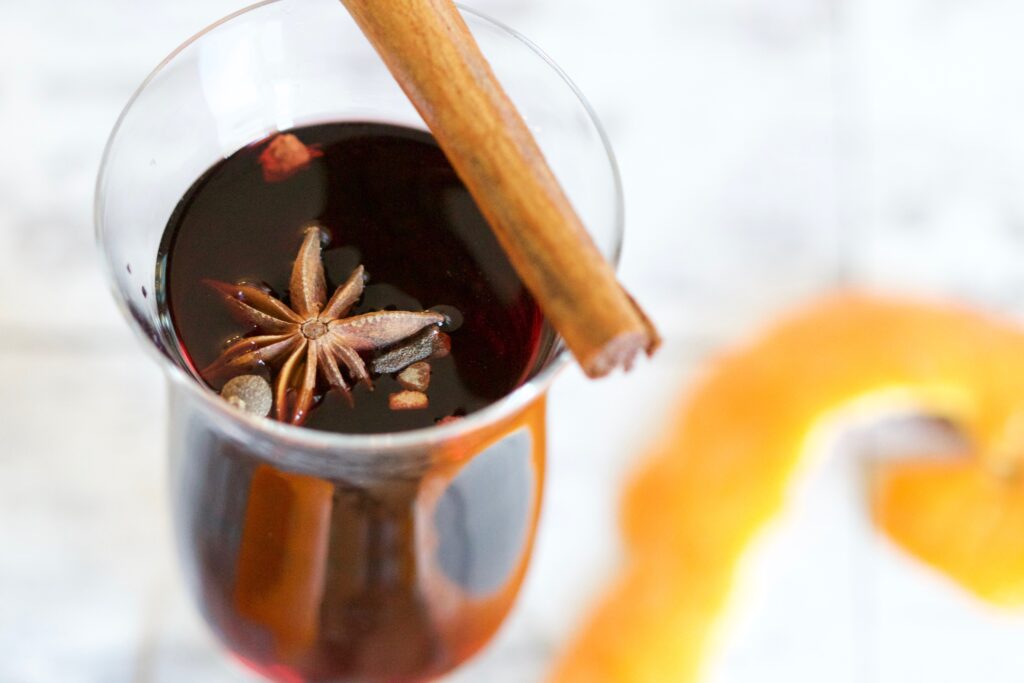
The simple definition of what a mulled wine is, is taking red wine, heating it up and adding spices to it.
But as we all know, we like to “spice” things up and create something with a little more pizzaz. And so the creation of a multitude of mulled wine styles begins.
Variations include adding spices, such as cinnamon, cloves, allspice, anise, and nutmeg. Citrus fruits and raisins can also be added to the mixture to enhance its flavor. And don’t forget other liquors, such as brandy, bourbon and beer are added depending on the recipe.
And there are many more cultures and countries that have some sort of mulled wine.
Mulled wine has a long history, starting back in 20 AD with the Romans.
By the 12th century, forms of mulled wine were very common in parts of Europe, especially in France and Spain. Recipes for this “spicy wine” can be found in written works of the time, like Regiment of Sanitat, written by Arnaud de Villeneuve, a doctor and theologian of the time.
This drink became even more popular in the 13th century, spreading further throughout Europe. The English king, Henry III, was very fond of mulled wine and made sure it was at the table when eating.
As the years went by, mulling was used more as a way to prevent waste of any wine that may have been unpleasant to taste. By adding herbs, spices and fruits, it made the wine more palatable.
Throughout the years, cultures took the recipes and altered them to suit their own taste. By adding different spices, herbs and fruits, they all created unique versions of this winter beverage.
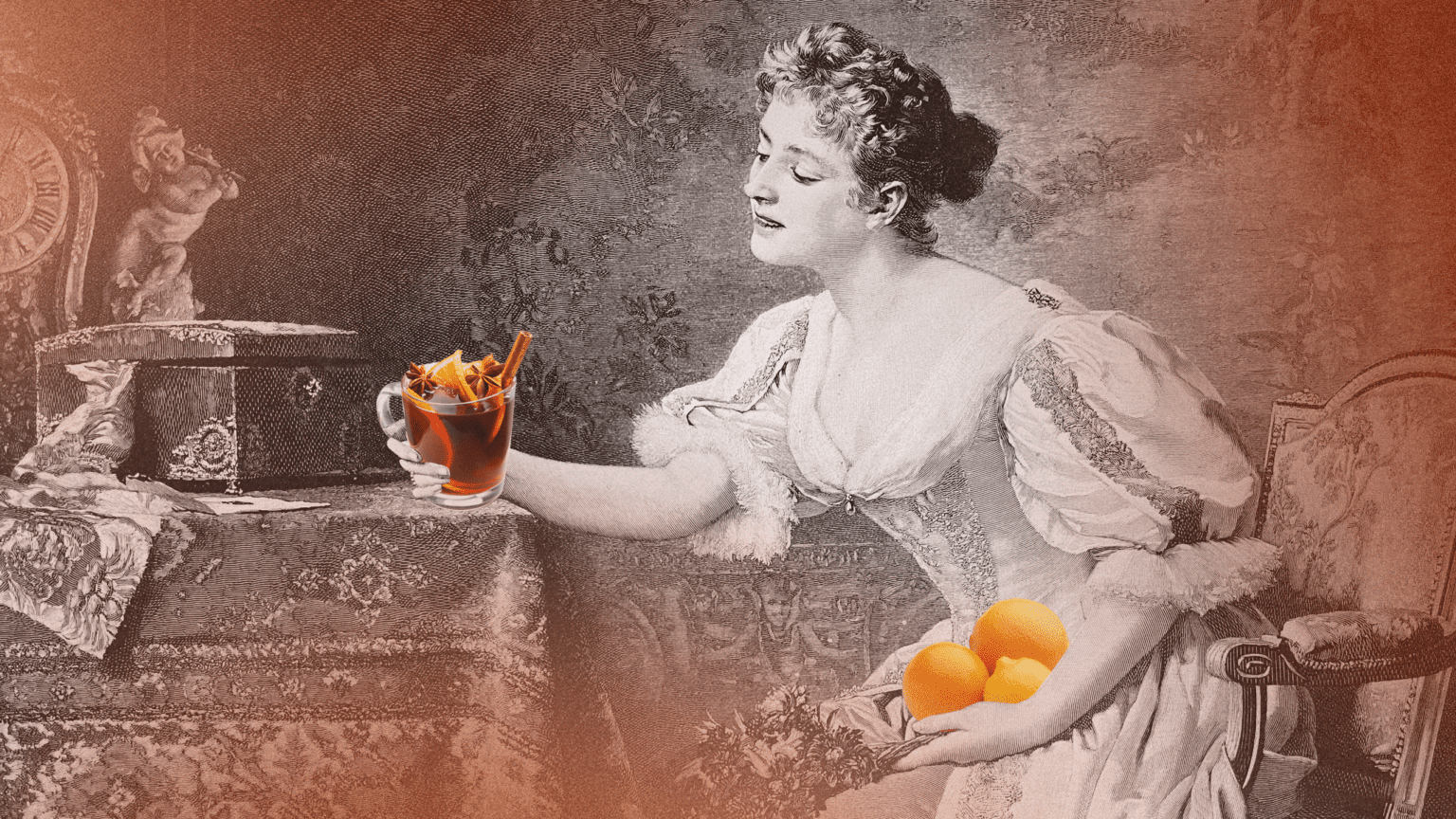
In the Middle Ages, people viewed mulled wine as almost medicinal. They believed that the added spices made them healthier. They weren’t exactly wrong. And, alcohol was at times safer than the water that was readily available to those that lived in cities, especially during the Black Death.
Ancient Greece used spiced wine as a medicinal tonic for warming the body. The Greeks called this elixir hippocras, after Hippocrates of Kos, the physician known as the “father of medicine”.
When taking a dive into the ingredients, one can see how mulled wine is a form of medicine and the health benefits it can provide.
Red wine offers many health benefits. It supports cardiovascular health and helps fight inflammation. Because it contains resveratrol, it can help sharpen your mind and fights off free radicals. Red wine may also help to improve your mood.
A study, conducted at Curtin University in Australia, found that regular consumption of red wine reduced the risk of developing cardiovascular disease by lowering LDL cholesterol levels in postmenopausal women by 8 percent and increased HDL cholesterol levels by 17 percent.
When used as a sweetner, honey has many benefits. It is a natural antibiotic and helps to activate the medicinal properties of the other herbs and spices.
Cinnamon brings warmth into the digestive organs and extremities. It also helps to lowers blood sugar levels and helps remove digestive parasites.
Orange peel, which is high in vitamin C, can improve our immune system. You can learn more about the health benefits of orange in my blog post 21 Reasons to Get Orange Peel Into Your Diet.
Cloves are anti-parasitic and help remove worms from the gut and improve circulation. But don’t add too many or you will numb your taste buds.
Cardamom brings strength to the digestive tract.
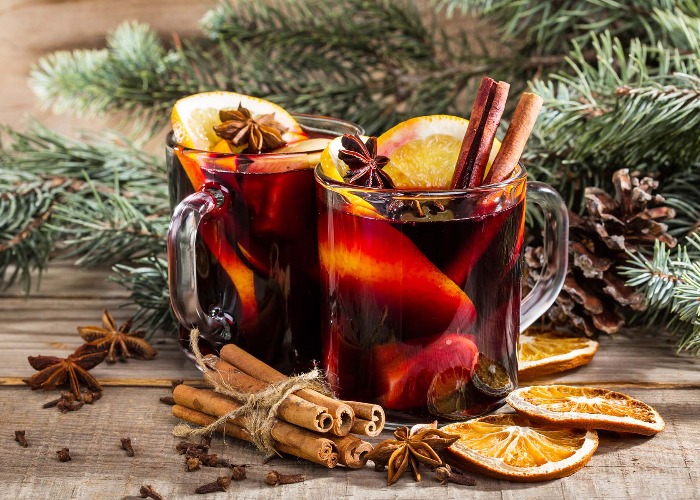
So why is mulled wine such a popular drink during the holidays and at Christmas?
This tradition appeared in the 1890’s, when outside German markets offered this warming beverage to their shoppers. Within a few years, it became a contest as to who could create the best tasting mulled wine in the market.
Charles Dickens, the writer, included a passage which mentioned Smoking Bishop, a popular mulled wine of the day, in his classic A Christmas Carol.
And what do you eat with mulled wine? There is nothing better to serve it with than shortbread, speculoos, or a cinnamon or almond cake.
Even though this is considered a holiday drink, Mulled Wine Day is celebrated on March 3.
There are a lot of variations when it comes to the recipes and ingredients for mulled wine. But here is a list of the most common items needed in making this beverage.
There is no shortage of recipes for mulled wine. Just Google it and see how many pages of recipes pop up. It’s really no surprise since this beverage has been around for centuries.
Once you start looking, you’ll be amazed at the variety of recipes that are out there. What is even more amazing is that once you know how to do it, you can start creating your own versions of mulled wine. There really is no wrong way.
To get you started, I put in a few links to some tasty mulled wines below. Once you try one, let me know what you think in the comments below.
CHEERS!
https://www.myrecipes.com/how-to/cooking-questions/what-is-mulled-wine
What is Mulled Wine? How to Make it and 5 Easy Recipes.
The mulled wine: origins and preparation advice
The History of Mulled Wine
https://www.nenaturalhealthcentre.com/uploads/2/5/8/6/25863178/mulled_wine.pdf
https://www.goodhousekeeping.com/health/diet-nutrition/a33145/drink-wine-every-day/
Benefits of Red Wine for the Heart, Body & Mind
In a world where everyone tries to be the same, being different is a breath of fresh air. And that is exactly what I need to be to make it in the herbal world. Standing out from the crowd is essential, because no one ever made a difference by being like everyone else.
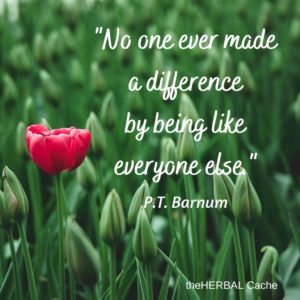
The answer is simple: be myself!
I can do this by being confident in who I am, being true to my values, and by sharing my knowledge with others.
Being confident in who I am is the foundation for everything else. If I don’t believe in myself, no one else will. So it’s important that I nurture a strong sense of self-worth. This doesn’t mean being egotistical or self-centered. It means having a healthy respect for myself and my abilities.
Being true to my values is also important. I need to stay true to what I believe in, even if it goes against the grain. If I’m not authentic, people will see right through me.
Finally, I need to share my knowledge with others. If I keep everything to myself, what’s the point? It’s important that I share my expertise with those who are interested. That way, I can make a difference in the herbal world.
Be different. Be unique.
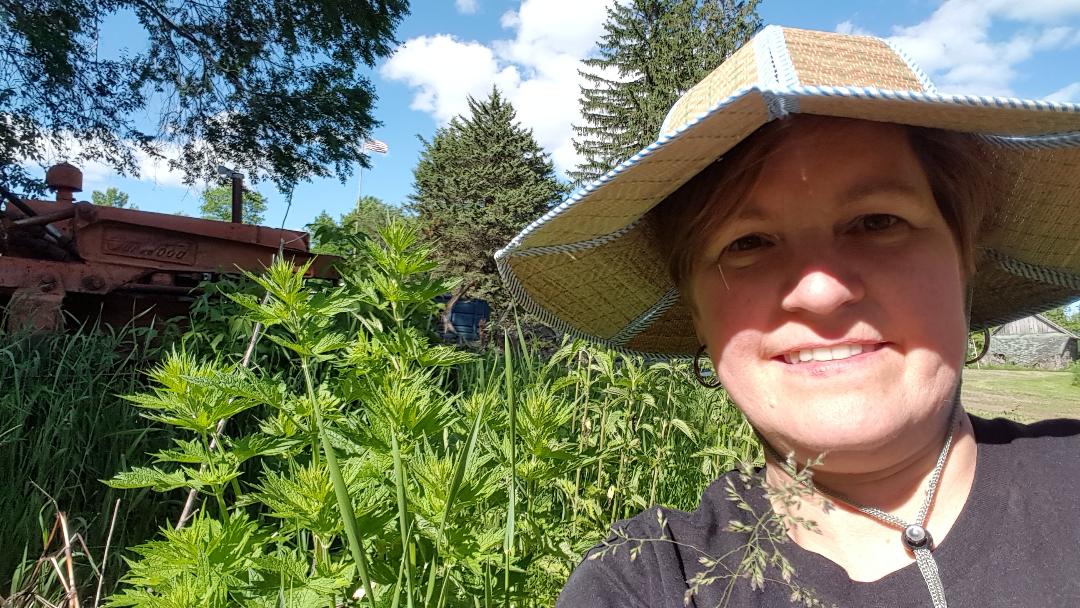
Herbalism has really gained momentum over the past few years, with more and more people looking to nature for wellness.
So where does that put me as an herbalist?
Lost! LOL!
Recently, I have started to feel like I’m swimming in an ocean, and have no sense of direction. I’m focusing on this, and then I’m focusing on that. For an entrepreneur, that is not good.
But I want to learn everything about herbalism and all there is to know about plants!
Well, I know I can keep learning. But if I want to grow my herbal business, I need a plan. I need some form of direction so my customers, like you, know what the heck I’m offering them.
My first path I want to create will be focused on herbal beverages and cocktails.
I recently read a tidbit in an email from CommonWealth Herbs on infusing herbs in wine. That caught my eye, because I love wine. So I tried it.
After that, herbs and beverages just kept popping out at me. A botanical drinks course, books, recipes, etc. And so I thought, why don’t I focus on herbal beverages? This is an easy and wonderful way to add herbs to your diet.
After all, what could be more refreshing than a nice cold herbal tea on a hot summer day? Or a delicious cocktail made with fresh herbs?
There are many types of beverages I will be looking into. Some of those will be mead, wine, infusions, shrubs, tonics, switchels, ciders and more!
As I go along on my herbal journey, I will be sharing it with you too, so that you can take part in the wonderful world of herbal drinks and add them to your wellness cabinet.
Cheers!

As with anything, the government likes to dip its hand into herbalism when it sees fit.
Don’t get me wrong, we need laws and guidelines to keep things in order. Herbalism is such a large part of our lives and it’s important to be informed about the laws and guidelines that surround it. But sometimes I feel the government takes on more then what it should.
So with this being said, with this pathway, I want to look at the history of herbalism and Big Pharma, and how they have competed throughout the years. I also will look at the current standings and bills trying to get through the legislature that involve the future of herbalism and supplements.
After all, we are the ones who use these products and we should have a say in how they are regulated.
I may only be one person, but I have to do what I can as an individual to keep herbalism safe and alive. And that means being aware of what is happening at the government level as well as what is happening in my backyard.

So my two focuses for the future are herbal beverages and the laws that affect herbalism. I don’t know how long this journey will be, but I know it will be interesting and thirst satisfying!
I will still be inserting other topics in here and there. Need to keep things interesting, right?
So I hope you will stick around for the journey.
Gardening is such a relaxing and fun activity, and the whole family can join in. The best thing about gardening is that you get to reap the food benefits at the end!
If you’re interested in having a medicinal garden that is low-maintenance, there are certain things you should keep in mind to make it succeed. This includes when to plant, what plants to choose and where to put them. So be prepared to do a little research for your area.
Also, with all the chaos going on in today’s world, now is the perfect time to grow your own and not have to rely on others. Especially with the prediction of shortages looming over our heads.
Medicinal gardens provide many benefits. Not only do they look beautiful, but they can also be used to create natural remedies and food.
And don’t worry about space. Even if all you have is a balcony or small patio, you can utilize pots to grow your herbs in.
Don’t take on too much at the beginning. If you are new to gardening, maybe start with 1-4 plants and see how you do, and how the plants do. The last thing you want to do id overwork yourself and get frustrated and quit.
If you’re interested in starting your own medicinal garden, keep on reading for everything you need to know.
“The kiss of the sun for pardon,
The song of the birds for mirth
One is nearer God’s Heart in a garden
Than anywhere else on Earth.”
Many people enjoy planting medicinal herbs and other medicinal plants. The benefits of these plants have been known for centuries, and they continue to be used by many cultures around the world.
While the exact time to start planting will vary depending on the plant and the climate, there are a few general guidelines that can be followed. For most medicinal plants, it is best to start planting in early spring. This gives the plant time to become established before the hot summer months. However, some plants, such as lavender, do better if they are planted in late summer or early fall.
Think about how you want to start out. Do you want to try growing your herbs from seed or buy seedlings? Some herbs are very hard to start with seeds, so research before buying.
Many herbs are perennials, meaning they will come up every year, so once you get them started, you won’t have to replant them. One less thing to do next year!
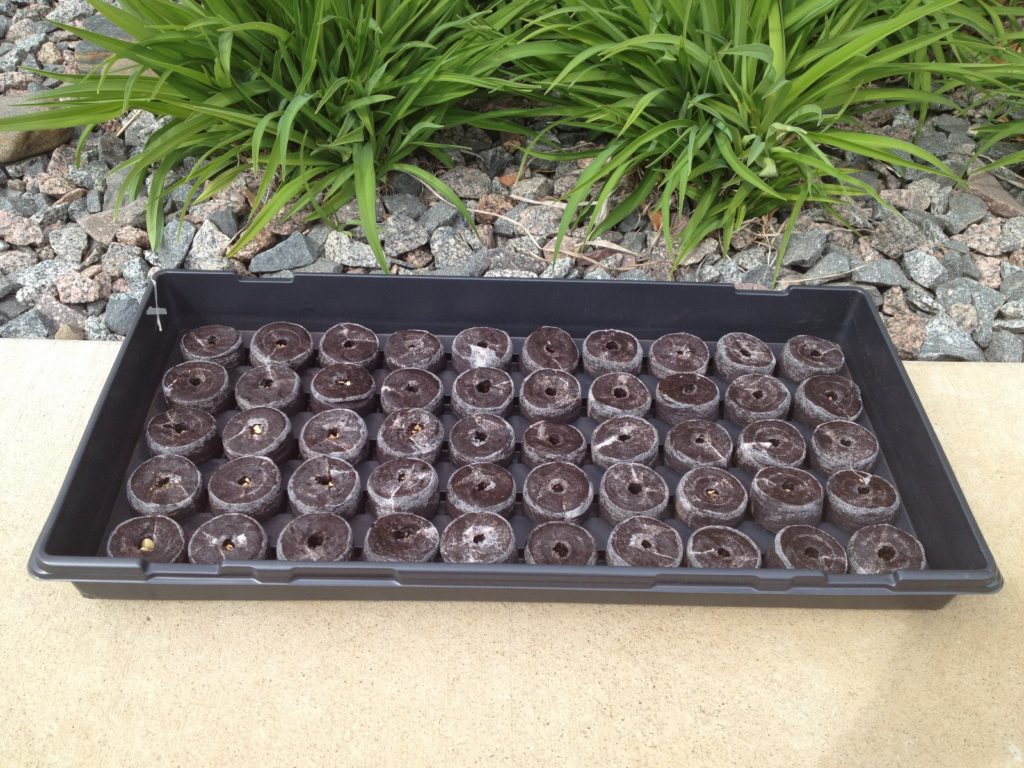
When it comes to medicinal plants, there are a variety of different options to choose from.
Some popular choices include herbs such as basil, rosemary, and mint. These herbs can be used to add flavor to food or brew tea. Other medicinal plants include echinacea, which is used to boost the immune system, and ginkgo biloba, which is often taken as a supplement to improve cognitive function.
Determine what and how you plan to use the herbs. Do you want to just use them in cooking? Than look into planting culinary herbs, such as thyme and sage. If you plan on using them for strictly medicinal purposes, what medicinal issues? If you have skin issues, you may want to plant calendula, which is wonderful for healing wounds, rashes, burns, and dry skin.
No matter what medicinal plants you choose to grow, it is important to research how to care for them properly. Make sure you know how much sun, water and space they will need, as well as any other special requirements.
With a little bit of care, your medicinal garden will grow and produce healthy plants.
Excited about the idea of growing your own medicinal plants and herbs, but not sure where to start? If you’re looking for a spot that is low maintenance and will allow your plants to thrive, here are a few ideas to get you started.
One option is to create a medicinal garden in containers. This can be an easy way to get started, and it gives you the flexibility to move your plants around if necessary. Make sure to choose containers that are large enough for the roots of your plants, and place them in an area that gets plenty of sunlight. You’ll also want to be sure to water your plants regularly, as they can dry out quickly in containers.
Another option is to plant your medicinal garden directly in the ground. If you choose this option, make sure to pick an area of your yard that gets plenty of sunlight and has well-draining soil. To prepare the soil, mix in some compost or other organic matter to help the plants thrive. Once you’ve chosen a spot and prepared the soil, you can start planting your medicinal garden.
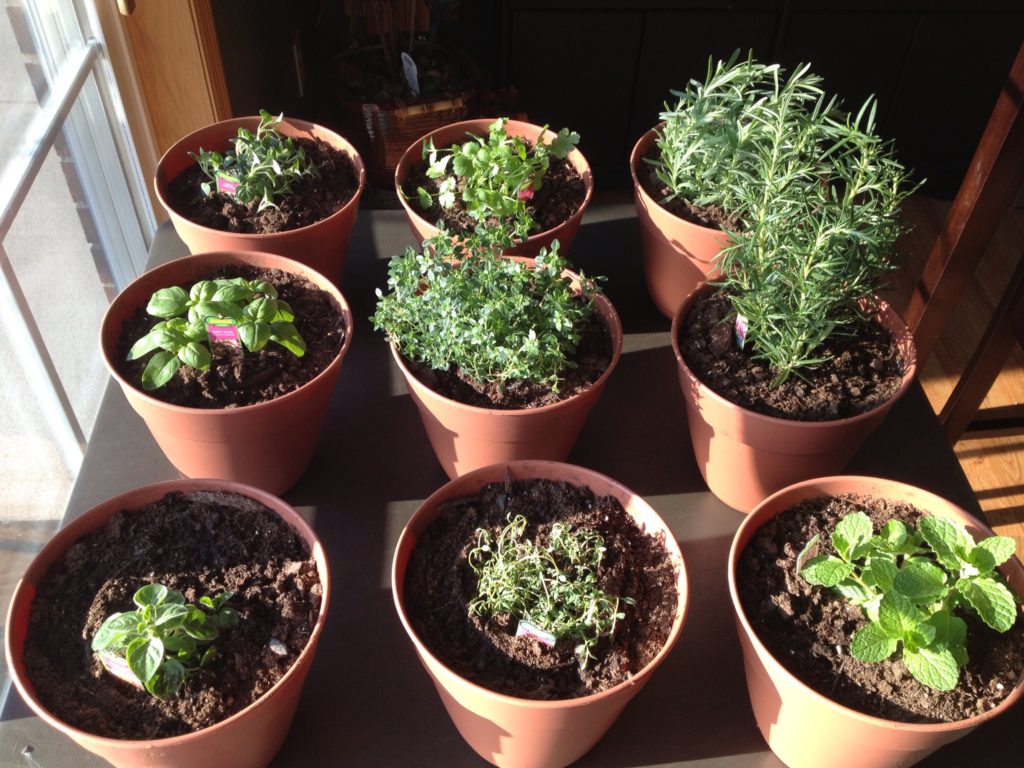
When it comes to medicinal plants and herbs, there are a few things you can do to ensure they thrive in their environment.
First, make sure they have plenty of sunlight. Most medicinal plants and herbs need at least 6-8 hours of direct sunlight each day. Secondly, water them regularly. Allow the soil to dry out slightly between watering, but don’t let the plants get too dehydrated. Third, make sure they’re in a location with good air circulation. Avoid placing them in overly humid or damp areas, as this can lead to fungal growth. Finally, don’t forget to fertilize your plants every few weeks. This will help them to continue growing strong and healthy.
Don’t get upset if a herb or two die on you. Depending on the time of year, you can always plant it again. I love a quote by the Farmstead Lady: “Well, that’s why God invented next year”! Don’t give up on the first try.
If you stay on top of it, you can help your medicinal plants and herbs stay healthy and thrive.
While many medicinal plants are herbs, there are also medicinal flowers and trees.
If you’re looking to add more medicinal plants to your garden, there are a few things to consider. First, what do you want to use the medicinal plants for? There are many different types of medicinal plants, each with their own unique properties. Do some research to find out which plants would be best suited for your needs. Second, consider which plants would be low maintenance. Some medicinal plants can be quite finicky, so it’s important to choose ones that will be easy to care for. Finally, think about how you can add variety to your garden. Maybe you could add some herbs or flowers that can also be used medicinally.
If you’re interested in adding more variety to your medicinal garden, consider some of the following low-maintenance options.
One easy-to-grow medicinal plant is lavender. Lavender has a long history of use as a medicinal herb, and it can be used fresh or dried. Lavender is most commonly used to ease anxiety and promote relaxation, but it can also be helpful for headaches, insomnia, and stomach upset.
Chamomile is another easy-to-grow medicinal plant. Chamomile tea is well-known for its ability to soothe nerves and promote sleep. Chamomile can also be used as a topical treatment for skin conditions like eczema and psoriasis.
Rosemary is a versatile medicinal herb that can be used in cooking or taken as a supplement. Rosemary is thought to improve memory and concentration, and it has also been traditionally used to treat stomach upset and headaches.
Mint is a refreshing medicinal plant that can be used in teas, salads, or as a garnish. Mint is known for its ability to soothe an upset stomach, but it can also be helpful for respiratory problems and headaches. One thing to keep in mind with any member of the mint family, is that they will take over ground space. If this is an issue, consider planting mint in a pot.
Spiraea Herbs has a wonderful video showing some perennial herbs that you can add to your garden.
These are just a few of the many medicinal plants and herbs that you can grow in your garden. By adding a few of these low-maintenance options, you can create a medicinal garden that is both beautiful and functional.
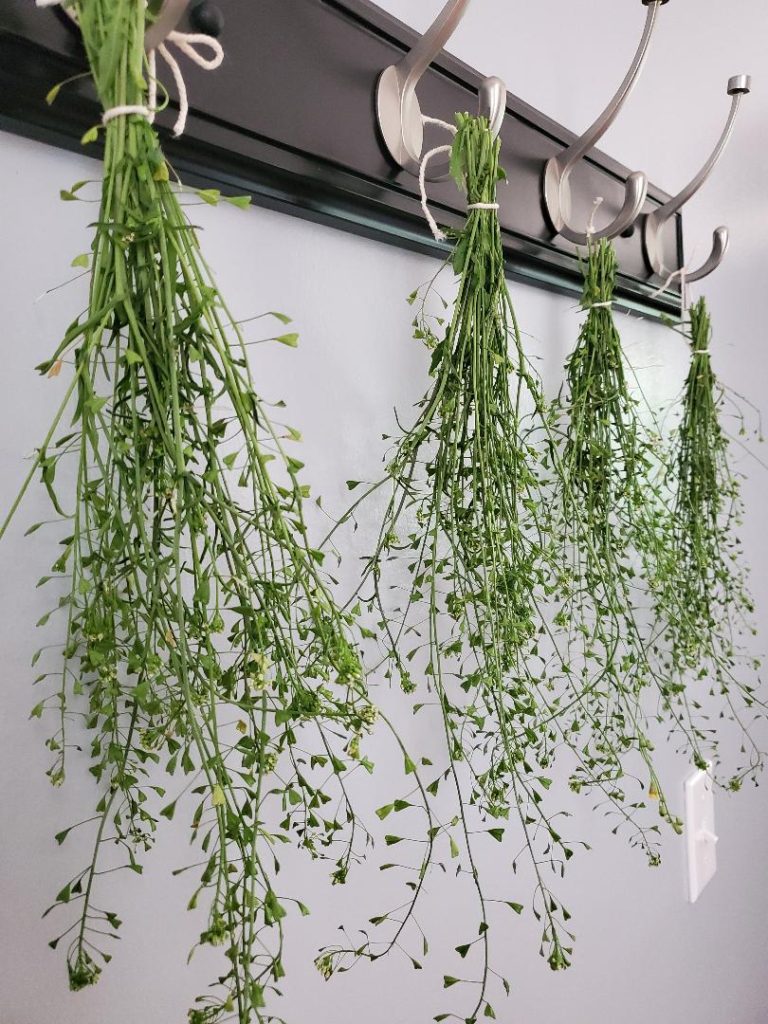
When it comes to medicinal plants, it’s important to know when to harvest them and how to store them properly. Otherwise, they may lose their potency or go bad before you have a chance to use them. Here are a few tips to help you get the most out of your medicinal plants:
With these tips, you can ensure that your medicinal plants are fresh and potent when you need them.
I hope this has inspired you to either start or add medicinal herbs to your garden.
There are many different types of medicinal plants, each with their own unique properties. Do some research to find out which plants would be best suited for your needs.
Second, consider which plants would be low maintenance and survive in your neck of the woods. Some medicinal plants can be quite finicky, so it’s important to choose ones that will be easy to care for. A plant that is easy to grow in California, may need a lot of attention in Minnesota.
Finally, take some time to learn about harvesting and storing medicinal plants. By following these tips, you can create a medicinal garden that is both beautiful and functional.
What medicinal herb are you going to plant?
If you are wondering where to get quality herbal seeds, Mountain Rose Herbs is the place to check out.
I’ve been getting herbs from them for years and trust them for high quality and ethically sourced ingredients. Their botanicals are analyzed and tested for identity, microbial, chemical, and physical contaminants.
Start shopping for your herbal seeds now!
Garden Lover
Here is a fun video to help get you in the mood!
Elderberries have been all the craze for some time. People make syrup, jam, tea and more with these berries.
What I found out in researching elderberries, was that these berries are very special. They are like the secret remedy for colds and the flu!
There are a few types of elderberry plants, but the black elderberry, Sambucus canadensis, is favored. Because of its strong anti-viral properties, it a huge defender against colds and the flu. Thus the reason for being so popular in the fall.